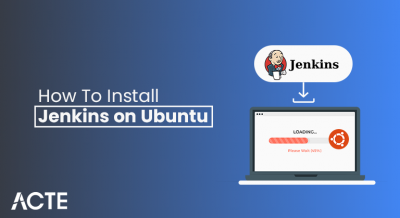
DevOps Engineers are managing multiple servers with more applications than ever before. To handle highly complex tasks, dozens of Configuration Management (CM) tools are introduced and the two most popular ones include Ansible and Puppet. According to experts, configuration management is a vital process and is considered imperative in the DevOps model to support continuous integration. In this blog for Puppet Ansible, we will discuss Puppet vs Ansible and significant differences based on certain parameters among the two.
Difference Between Ansible and Puppet
With CM tools, it is easy for admin to execute tasks on multiple servers together and deploy multiple apps with one click only. But how to decide the best DevOps tool that fits your requirements? Here, we will learn two popular configuration management tools, the difference between Puppet and Ansible, to get started.
To know more about configuration management tools, you may also check Chef vs Puppet.
History of Puppet:
The Puppet was introduced in 2005 and taken as the biggest player in the CM industry with excellent market share. It was founded by Luke Kanies and written in Ruby programming language. Ruby is an open-source programming language the runs on all major operating systems like Linux, Windows, Unix, Mac OS, etc.
The big IT Companies, Oracle and Google are running their data servers using puppet. There is one Enterprise edition available through PuppetLabs. Besides so many benefits, users’ complaints that Puppet is so slow in adopting requested changes like new features additions or fixing bugs, etc.
Ansible history:
Ansible was introduced in 2012 by Ansible Works which is owned by the Red Hat now and witnesses much smaller market share than Puppet. It is natural because Ansible is recent while Puppet has been around a lot longer. Puppet is also an open-source version and it has an enterprise edition too, Ansible Tower. It is written in Python programming language and meant to be lightweight with fast deployment features.
Python is built into Linux and Unix systems, so running and getting Ansible up is fairly simple and quick. It is agent less and easy to set up or use. It accepts command in almost all programming languages and it is considered a big benefit in the favor of Ansible. It includes hundreds of modules to support a wider number of integrations, like AWS and more.
To know the Ansible and Puppet more in terms of setup, use, scheduling, GUI, scalability, let us refer to the sections below.
Ansible vs Puppet – Difference Between Ansible and Puppet
Puppet is easy to install and use. It is model-driven built for system administrators in mind. It is based on the client-server architecture and you may install Puppet on multiple servers together. Puppet uses its own declarative language and installation takes 10 to 30 minutes approximately based on the environment and needs.
Ansible has a master and no agents running on the client machines, most functions are performed over SSH protocol only. It is quite simple, agentless and uses YAML syntax. The complex tasks are managed in configuration files named playbooks and commands can be written in almost any programming language. Ansible is written in Python which is built into most Linux and Unix deployments, making setup easier and faster.
Despite being complicated in more ways, Puppet has certain advantages over Ansible in terms of usage. The biggest advantage is that if you have any syntax errors, they are quickly highlighted in Puppet before you run the task. Tasks are executed in a specific sequence in case of Ansible and you are not notified for the failure of specific tasks until the complete task is executed. And more importantly, YAML is not an easy syntax to debug.
Ansible vs. Puppet: Availability
Availability will never be interrupted for both Ansible and Puppet. Ansible has the secondary node if the active node fails while Puppet has more than one master if the original master fails.
Ansible vs. Puppet: Modules
Puppet’s repository is Puppet Forge while Ansible’s repository is Ansible Galaxy. Forge has almost 6000 modules and they all are supported well by the Puppet. So, you don’t have to waste time if one is not proven to work. Galaxy does not include this feature so you have to spend more time adjusting things manually.
Ansible vs. Puppet:
Management and Scheduling
Ansible and Puppet both focus on push and pull configurations. In Puppet, the client pulls configurations from the server while in Ansible, the server pushes configurations to nodes for quick deployment. Puppet uses its own declarative language to write the configurations whereas Ansible uses YAML to write the configurations.
When it comes to scheduling, the Puppet agent checks frequently almost every 30 minutes to make sure nodes are in the desired state. The free version of Ansible does not involve that capability otherwise you can use the enterprise version, Ansible Tower to avail of this feature. Overall, Ansible lacks advanced features that its close competitors like Puppet have.
Ansible vs. Puppet:
Scalability
Ansible and Puppet both are highly scalable, which means they could handle a massive increase in nodes without any problem. However, scalability is considered more convenient in Ansible.
Ansible vs. Puppet:
Support
Puppet has been around for several years than Ansible and it is obvious that there is more support and a bigger developer community for the Puppet. There is a dedicated support team with an intensive knowledge base and two levels are professional support are also given that include Standard and Premium. To become involved in the Puppet community, you can access events or participate in other channels.
There are also more than 200 meetups worldwide that involve a big gathering of users and contributors annually. Overall, Ansible has a smaller developer community than Puppet and less support for troubleshooting resources on the web.
Ansible vs. Puppet:
GUI
Puppet’s Graphical User Interface is more interactive than Ansible. It is used to view, manage, and monitor more complex tasks otherwise there is an option of using CLI (command-line interface) too when needed which is written in Ruby.
At the time of its inception, Ansible was a command-line tool only. Now it has the UI in the enterprise version but it is not perfect. Sometimes, GUI is not in perfect sync with the Command line and is not able to perform the same things as the command-line interface.
Ansible vs. Puppet:
Pricing
At the basic level, Ansible and Puppet both are free and open-source DevOps tools. For the commercial versions, you have to pay a certain amount that depends on the level of support you want to avail of.
- For example, if you try the Puppet Enterprise, it is free up to 10 nodes. It costs $100 per node for the standard editions and $199 per node for the premium edition.
- Ansible Tower has three levels of pricing. First is self-support that involves $5000 per year for 100 nodes. Second is the standard edition that involves $10,000 per year for 100 nodes. The third is the premium edition that involves $13000 per year for 100 nodes.
Ansible vs. Puppet – Which one to choose?
With this blog, Ansible vs Puppet, you have a sound idea of the two most popular configuration management tools. Ansible and Puppet both the tools are excellent in their own ways for different reasons. The right choice really comes down to your business needs. Ansible is good for small and easy deployments while Puppet is often used for more complex or longer deployments. If you have a fixed set of machines to maintain then Puppet is certainly the best choice whereas if your machine counts are revised frequently then Ansible may be the right way to go.





